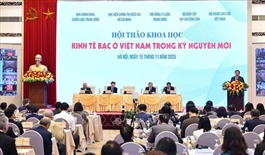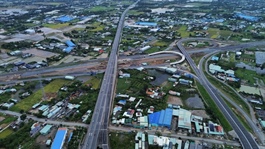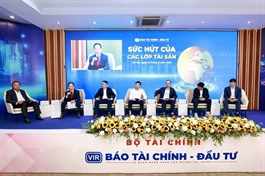Businesses call for clear energy roadmap
Businesses call for clear energy roadmap
Private investment is expected to play a decisive role in Vietnam’s power development, as the country needs more than $136 billion for electricity generation and transmission infrastructure between now and 2030, a scale far beyond what public resources can shoulder.
A report released in Hanoi last week at the Vietnam Business Forum (VBF) 2025 underscored that while Vietnam is committed to accelerating its energy transition, significant regulatory, contractual, and financial bottlenecks remain, preventing private capital from flowing at the required pace and scale.
The Infrastructure Working Group of the VBF highlighted in the report that better visibility and consistency in pricing mechanisms and long-term offtake arrangements are essential to secure investor confidence.
One pressing concern is the suspension of feed-in tariff (FiT) payments for several wind and solar projects that have already entered commercial operation. Since the second quarter of 2025, Vietnam Electricity (EVN) has halted FiT disbursement pending government guidance on documentation, particularly construction completion records at commercial operation date (COD).
“The situation has created serious financial uncertainty, disrupted revenue expectations, and raised concerns about retroactive policy shifts,” the report noted. “Some developers now face potential repayment of previously disbursed FiT amounts, posing significant risks to debt servicing and lender confidence. Reinterpreting eligibility criteria after projects are operational risks harming the credibility of the investment environment.”
The working group therefore recommends that the government issue a final, principle-based resolution to ensure fairness and legal continuity.
The mechanism enabling direct power purchase agreements (DPPA) between renewable generators and large electricity consumers is also viewed as crucial for corporate decarbonisation and competitive manufacturing. Although Vietnam has established the legal basis for DPPAs, no contracts have yet been concluded.
The VBF report points out that the unpredictability of monthly charges, including transmission, distribution, and operation costs, remains a barrier to implementation. It recommends “removing cost components that do not reflect fair and transparent cost allocation and ensuring tariff predictability” to avoid renewable electricity buyers being inadvertently exposed to fossil fuel price volatility.
These challenges are not limited to operational renewables. Developers of liquefied natural gas (LNG) and offshore wind (OSW) projects both central to ensuring long-term energy security, face difficulties securing long-term finance.
The VBF report records investor recommendations that minimum guaranteed offtake (Qc) should be at least 85–90 per cent across the full PPA term of up to 25 years to support project bankability.
OSW investors raise similar concerns. With very high upfront capital expenditure and long payback periods, they seek Qc guarantees of 90–100 per cent throughout the PPA duration. Existing frameworks allow for 80 per cent Qc only during loan repayment periods not exceeding 15 years, unless otherwise negotiated.
Recent proposals suggest higher Qc levels tied to approval and COD timelines, yet developers stress that full-term certainty is still needed to unlock financing.
Currency exposure also remains a structural risk. While PPA payments are denominated in VND, key project costs including engineering, procurement, and construction contracts, imported turbines, LNG cargoes, and foreign-denominated loans are in foreign currencies. The VBF report therefore proposes adopting foreign currency indexation or reference pricing mechanisms to maintain financial stability over the project lifecycle.
According to the American Chamber of Commerce in Vietnam at the VBF event, electricity supply and demand planning is inherently complex, requiring “close, continuous coordination between the public and private sectors to build a power system that is affordable, reliable, and sustainable”.
The British Chamber of Commerce in Vietnam shares this view, emphasising that Vietnam must mobilise an investment volume of over $136 billion for the 2026–2030 period, an amount far exceeding the fiscal space available to the state budget. “Therefore, the private sector must play a central role, including through green loans, sustainable bonds, and blended financing instruments,” a representative said.
However, even with both domestic and international investors engaged in LNG-to-power projects, and with growing commercial interest in OSW, moving these projects from planning to construction remains difficult. Investors point out that key conditions for bankability are still not fully in place. In particular, the level of guaranteed offtake under PPAs remains uncertain, and several regulatory provisions continue to be interpreted inconsistently across agencies.
Another major concern is the financial capacity of EVN, the sole wholesale electricity buyer. For many years, retail tariffs have not fully reflected the actual costs of power generation, transmission, and system operation. This has restricted EVN’s ability to commit to large, long-term payment obligations under PPAs, which in turn affects lenders’ willingness to provide project financing.
- 11:17 17/11/2025























